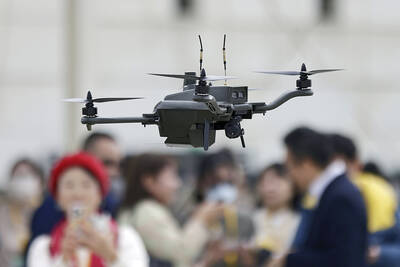US President Donald Trump on Sunday announced he is to replace US Secretary of Defense James Mattis with his deputy, Patrick Shanahan, speeding up the Pentagon chief’s planned exit days after he quit, citing key policy differences with the US president.
Mattis, 68, had said he would leave at the end of February to allow a smooth transition for the next chief of the world’s top military power, but Trump — who was reportedly upset over media coverage of the stinging resignation letter submitted by the defense secretary — moved up the timetable.
“I am pleased to announce that our very talented Deputy Secretary of Defense, Patrick Shanahan, will assume the title of Acting Secretary of Defense starting January 1, 2019,” Trump tweeted.
“Patrick has a long list of accomplishments while serving as Deputy, & previously Boeing. He will be great!” he wrote.
Trump initially praised Mattis in a tweet announcing his departure, saying that he was retiring “with distinction” and that “during Jim’s tenure, tremendous progress has been made.”
However, he changed his tone two days later, writing on Twitter that he had given Mattis a “second chance” after he was “ingloriously” fired by then-US president Barack Obama, and appearing to take aim at a line from Mattis’ resignation letter about respecting allies.
“Allies are very important — but not when they take advantage of US,” Trump wrote.
The announcement that Mattis would leave the administration came just after Trump stunned Washington and allies abroad in declaring that US troops would leave Syria and significantly withdraw from Afghanistan.
Mattis and others had counseled the often-impulsive president against those moves — and the decorated retired general did little to hide his disagreement with Trump.
“Because you have the right to have a secretary of defense whose views are better aligned with yours, I believe it is right for me to step down from my position,” Mattis said in his resignation letter.
“My views on treating allies with respect and also being clear-eyed about both malign actors and strategic competitors are strongly held and informed by over four decades of immersion in these issues,” he wrote.
Meanwhile, the US military has confirmed that the order to withdraw US troops from Syria had been signed, after Trump held talks with his Turkish counterpart to negotiate a pullout that has stunned Washington’s allies.
“The execute order for Syria has been signed,” a US military spokesperson told Agence France-Presse on Sunday in response to a query, without providing further details.
Turkey was a rare ally that lauded Trump’s decision on Syria, a country where it will now have a freer rein to target Kurdish fighters who were armed and trained by the US and played a major role in the war against Islamic State (IS) militants, but are deemed terrorists by Ankara.
Trump and Turkish President Recep Tayyip Erdogan spoke by telephone on Sunday and “agreed to ensure coordination between their countries’ military, diplomatic and other officials to avoid a power vacuum which could result following any abuse of the withdrawal and transition phase in Syria,” Erdogan said in a statement.
Trump tweeted that he and Erdogan “discussed [IS], our mutual involvement in Syria, & the slow & highly coordinated pullout of U.S. troops from the area.”
Later on Sunday he tweeted that Erdogan had assured him that any IS fighters remaining will be eliminated.
“President @RT_Erdogan of Turkey has very strongly informed me that he will eradicate whatever is left of ISIS in Syria,” Trump said in a tweet.

The combined effect of the monsoon, the outer rim of Typhoon Fengshen and a low-pressure system is expected to bring significant rainfall this week to various parts of the nation, the Central Weather Administration (CWA) said. The heaviest rain is expected to occur today and tomorrow, with torrential rain expected in Keelung’s north coast, Yilan and the mountainous regions of Taipei and New Taipei City, the CWA said. Rivers could rise rapidly, and residents should stay away from riverbanks and avoid going to the mountains or engaging in water activities, it said. Scattered showers are expected today in central and

COOPERATION: Taiwan is aligning closely with US strategic objectives on various matters, including China’s rare earths restrictions, the Ministry of Foreign Affairs said Taiwan could deal with China’s tightened export controls on rare earth metals by turning to “urban mining,” a researcher said yesterday. Rare earth metals, which are used in semiconductors and other electronic components, could be recovered from industrial or electronic waste to reduce reliance on imports, National Cheng Kung University Department of Resources Engineering professor Lee Cheng-han (李政翰) said. Despite their name, rare earth elements are not actually rare — their abundance in the Earth’s crust is relatively high, but they are dispersed, making extraction and refining energy-intensive and environmentally damaging, he said, adding that many countries have opted to

FORCED LABOR: A US court listed three Taiwanese and nine firms based in Taiwan in its indictment, with eight of the companies registered at the same address Nine companies registered in Taiwan, as well as three Taiwanese, on Tuesday were named by the US Department of the Treasury’s Office of Foreign Assets Control (OFAC) as Specially Designated Nationals (SDNs) as a result of a US federal court indictment. The indictment unsealed at the federal court in Brooklyn, New York, said that Chen Zhi (陳志), a dual Cambodian-British national, is being indicted for fraud conspiracy, money laundering and overseeing Prince Holding Group’s forced-labor scam camps in Cambodia. At its peak, the company allegedly made US$30 million per day, court documents showed. The US government has seized Chen’s noncustodial wallet, which contains

SUPPLY CHAIN: Taiwan’s advantages in the drone industry include rapid production capacity that is independent of Chinese-made parts, the economic ministry said The Executive Yuan yesterday approved plans to invest NT$44.2 billion (US$1.44 billion) into domestic production of uncrewed aerial vehicles over the next six years, bringing Taiwan’s output value to more than NT$40 billion by 2030 and making the nation Asia’s democratic hub for the drone supply chain. The proposed budget has NT$33.8 billion in new allocations and NT$10.43 billion in existing funds, the Ministry of Economic Affairs said. Under the new development program, the public sector would purchase nearly 100,000 drones, of which 50,898 would be for civil and government use, while 48,750 would be for national defense, it said. The Ministry of